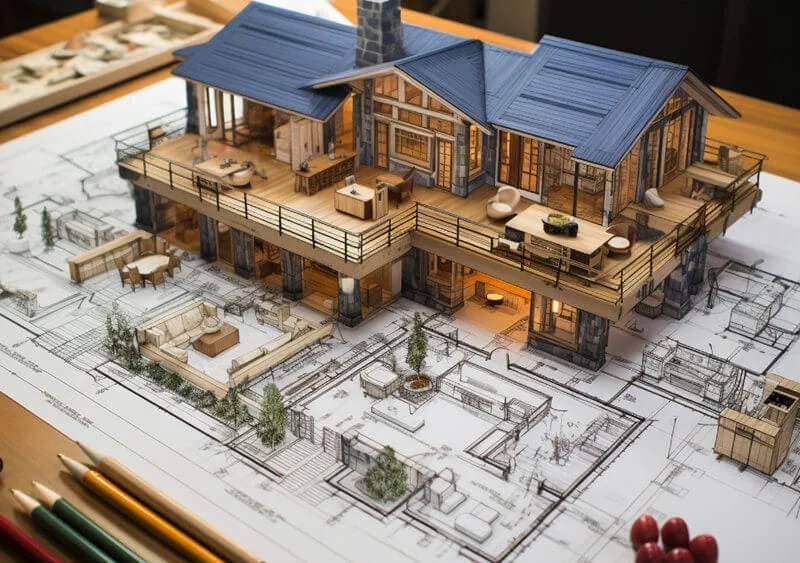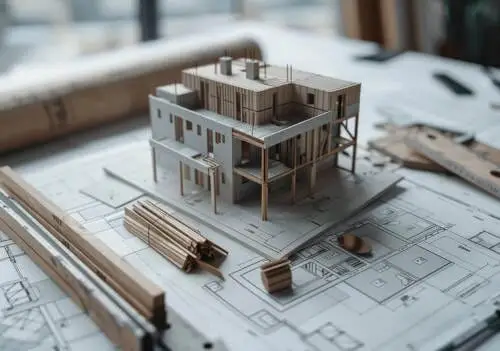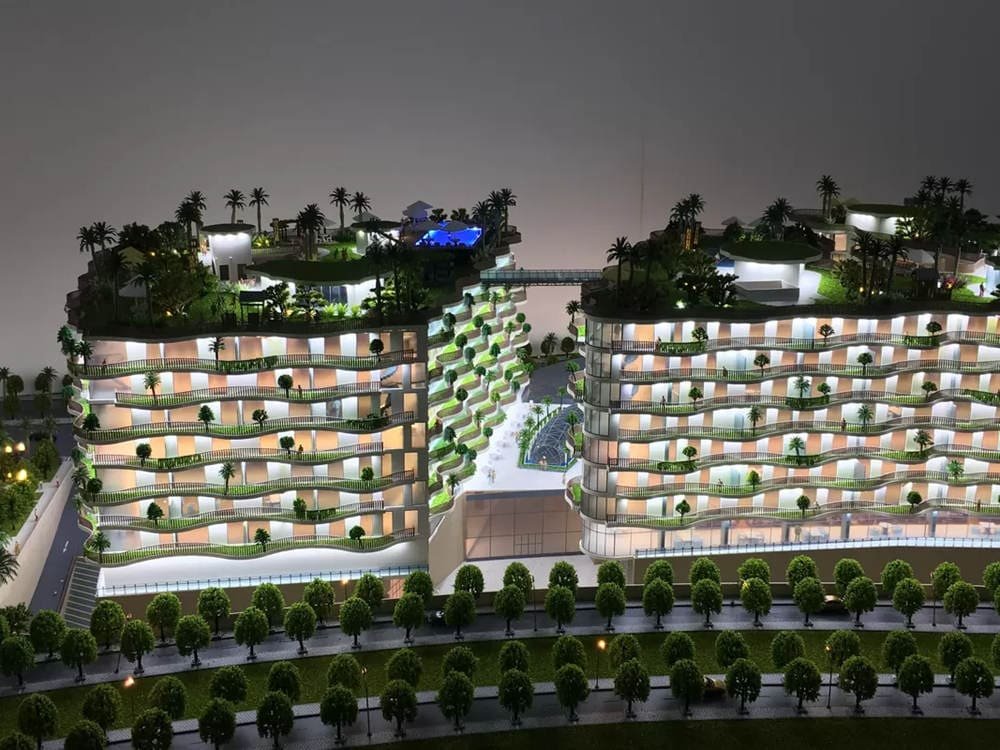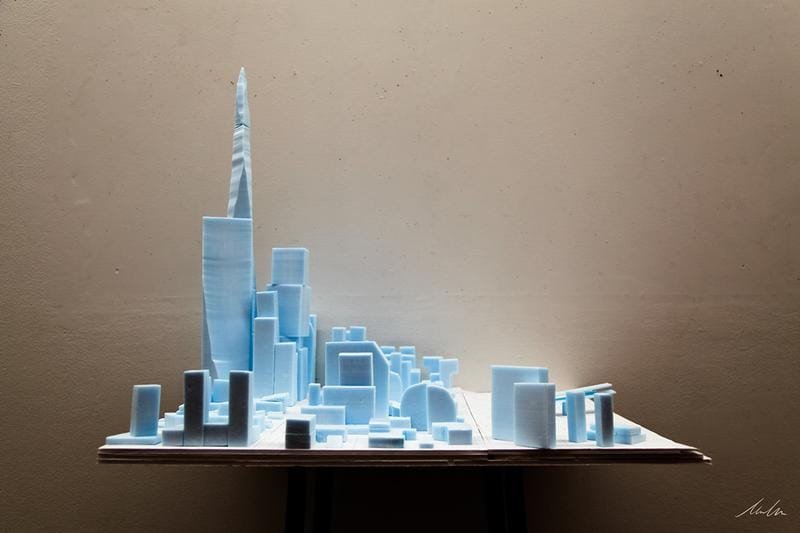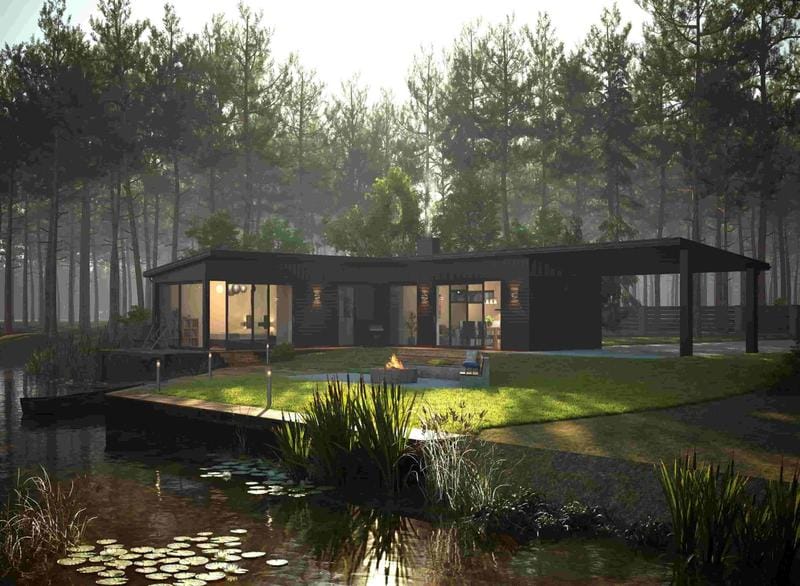Your latest project is ambitious. It’s visionary. You can see every detail perfectly in your mind. But how do you show it to the world? How do you convince investors, sell to clients, and get city planners on board? You need to make your vision tangible. You need an architectural model. And when it comes to getting a world-class model, China is the global hub. But this is where the journey gets tricky. How do you find the right partner from thousands of miles away?
Choosing a model-making supplier in China isn’t like ordering something off a shelf. It’s about finding a team of artists and engineers who will become an extension of your own team. A great supplier doesn’t just build a replica; they build your dream. A bad one can cause delays, frustration, and a final product that falls flat. This guide is your roadmap. We’ll walk you through every step, from understanding why a great model is so critical to checking the fine print on a contract. Let’s make sure you find a partner who will do your vision justice.
Table of Contents
Why a Great Model is Your Project’s Secret Weapon
Before we dive into the “how,” let’s talk about the “why.” In a world of amazing computer renderings and virtual reality, why is a physical model still so powerful? Because a model does things that a screen simply can’t. It’s a game-changer for your project in four key ways.
It Builds Unshakeable Confidence
Imagine you are an investor. You see a beautiful digital picture of a new skyscraper. It’s impressive. But then, you walk into a room and see a massive, glowing, six-foot-tall model of that same skyscraper. You can see the texture of the facade, the tiny lights in every window, the little cars driving around its base. It feels real. It feels serious. A high-quality model tells investors that you are professional, you have a solid plan, and you are committed to quality down to the smallest detail. It transforms your project from an idea into an inevitability.
It Becomes Your Star Salesperson
In the competitive real estate markets of the Middle East, a sales gallery needs a centerpiece. The model is that centerpiece. It’s a magnet. Potential buyers will gather around it, pointing out their potential apartment, tracing the path to the pool, and imagining their new life. It creates an emotional connection that a brochure can never match. A fantastic model doesn’t just show a property; it sells a lifestyle. This emotional buy-in can lead to faster sales and help you achieve premium prices, turning your model into a revenue-generating machine.
It’s a 3D Reality Check for Your Team
Even the best architects and designers can miss things on a computer screen. A physical model is the ultimate reality check. It might reveal that a planned walkway feels too narrow, or that a “stunning view” from a key office is actually blocked by another part of the building. Finding these issues on a plastic model is a simple fix. Finding them once the concrete has been poured is a nightmare. The model is an insurance policy against costly construction-phase changes.
It Makes Complex Ideas Simple
Trying to explain a multi-phase master plan or a complex traffic flow system to city officials can be tough. A model makes it easy. It allows you to literally point to what you mean. Planners can see how public spaces connect, how buildings relate to each other, and how the project fits into the existing city. This clarity can speed up approvals and build a positive relationship with regulatory bodies.
The Hunt Begins: What to Look for in a Top Supplier
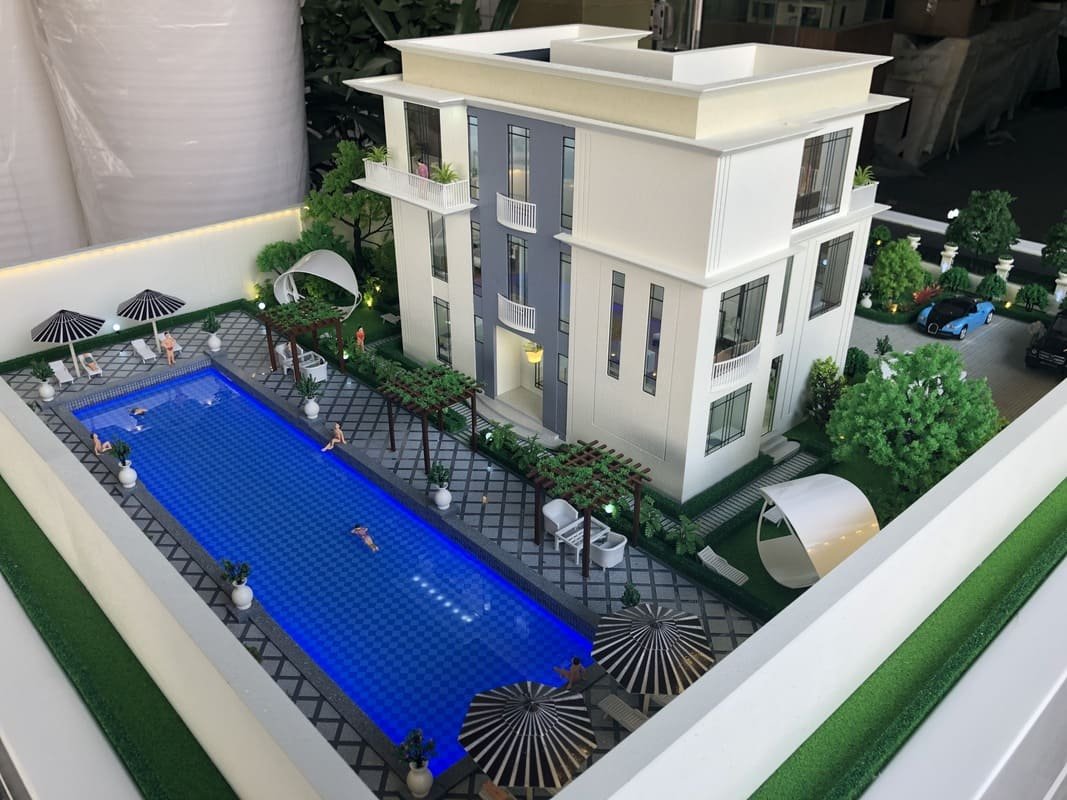
You’re convinced. You need a great model. Now, how do you find the people who can build it? When you’re looking for a supplier in China, you need to be a detective. You’re looking for clues that prove they have the skill, the capacity, and the professionalism to deliver. Let’s break down the most important clues to look for.
Experience That Truly Matters: Have They Done This Before?
This is rule number one. You need a supplier who has experience with projects just like yours. A factory that makes amazing models of small houses might be completely lost when faced with a huge, complex mixed-use development.
- Look for Similar Projects: When you look at their portfolio, don’t just look for pretty pictures. Look for projects of a similar scale (like a super-tall tower), type (like a luxury hotel resort), and style (like modern, complex architecture).
- The Middle East Connection: A huge bonus is a supplier who has already worked with clients in the Middle East. They will understand the aesthetic—the love for luxury, grand scale, and intricate details inspired by regional art. They’ll also know the practical stuff, like how to ship a massive model to Dubai or Riyadh without any hitches. Ask them directly: “Show me your projects in the UAE or Saudi Arabia.”
The “Wow” Factor: A Master’s Eye for Detail
The difference between a good model and a truly great one is the details. It’s the tiny things that, all together, create a stunning sense of realism. When you examine a supplier’s work, put on your magnifying glass and look at:
- Landscaping: Are the trees just green sponge on a stick, or do they look like real, specific species of trees? Do the pools look like deep, shimmering water, or just blue plastic?
- Textures: Can you tell the difference between “glass,” “stone,” and “metal” on the model? A top supplier uses advanced painting techniques to mimic the texture and shine of real materials.
- Lighting: Is the light just “on,” or does it create a mood? Great models use different colors and brightness levels to make spaces feel real. Warm, soft light for apartments; bright, crisp light for retail stores.
- The Little Things (Entourage): Look at the tiny people and cars. Do they fit the style and quality of your project? For a luxury resort, you don’t want cheap-looking plastic cars from the 1980s.
| Table 1: Key Questions to Ask a Potential Supplier | |
|---|---|
| About Their Experience | “Can you show me three projects you’ve completed that are similar in scale and complexity to ours?” |
| About Their Middle East Work | “What is your experience shipping to and installing models in the UAE/KSA? Can you provide a reference from that region?” |
| About Their Team | “Who will be my dedicated project manager, and what is their experience? Can I speak with them?” |
| About Their Process | “What are the key stages for my review and approval during the production process?” |
Under the Hood: Sizing Up the Factory’s Real Power
A supplier’s website can promise the world, but the reality of their workshop is what truly matters. You need to know if they have the muscle to handle your project. This means looking at the size of their operation, the skill of their team, and the quality of their tools.
Factory Size and Team: Can They Handle Your Big Dream?
For a large, important project, you want to avoid small, garage-style workshops. They may be cheaper, but they can easily get overwhelmed, leading to delays and compromises in quality. You’re looking for a professional operation.
- The Space to Create: A serious factory will be large, often over 3,000 square meters. This gives them room for different specialized departments—a clean area for high-tech machines, a large space for assembly, a professional dust-free room for painting, and a dedicated workshop for electronics.
- The Power of People: Look for a factory with a large and experienced team, typically 100 to 500 people. It’s not just about numbers; it’s about specialists. Do they have master craftsmen who have been doing this for 20 years? Do they have dedicated electronics experts and landscape artists? A deep bench of talent is crucial.
| Table 2: Small Workshop vs. Large Professional Factory | ||
|---|---|---|
| Feature | Small Workshop (10-30 People) | Large Factory (100+ People) |
| Best For | Simple, single-building models with flexible deadlines. | Large, complex, high-stakes projects with firm deadlines. |
| Capacity | Can only handle one or two projects at a time. A new urgent project can derail yours. | Can handle multiple large projects at once with dedicated teams for each. |
| Specialists | Workers are generalists who do a bit of everything. | Has dedicated experts for lighting, painting, landscape, and more. |
| Risk | Higher risk of delays and quality inconsistencies. | Lower risk due to standardized processes and deeper resources. |
The Toolbox: The Tech and Tools of the Trade
The best models are born from a perfect marriage of modern technology and timeless hand skills. A top factory will be proud to show off their equipment. You can find excellent background information on these technologies at sites like Formlabs’ blog.
- CNC Machines: Think of these as super-smart, computer-guided carving tools. They can cut and engrave large pieces of plastic or wood with incredible precision, perfect for making building facades.
- Laser Cutters: These use a high-powered laser to cut materials with pinpoint accuracy. They are essential for creating incredibly fine details, like window frames or delicate decorative screens.
- 3D Printers: This technology is a game-changer. It allows the factory to create complex, curved, or unique shapes that would be impossible to make by hand. They are perfect for custom furniture, unique roof structures, or detailed sculptures.
- The Artist’s Bench: Don’t forget the traditional tools! A great factory will also have a team of artisans skilled with hand tools for the final finishing, assembly, and details that give a model its soul.
Building Trust: Looking for Proof of Professionalism
Okay, so a supplier has a nice portfolio and a big factory. How do you know if they are truly reliable? You need to look for external proof—trust signals that show they are a professional, well-run business committed to quality.
What Do Certifications Like ISO 9001 Really Mean?
You might see logos like “ISO 9001” on a supplier’s website. These aren’t just for decoration. They are a big deal. ISO 9001 is an international standard for quality management. In simple terms, it means the factory has a strict, documented system for everything they do, from how they talk to clients to how they check for quality. A certified factory is more likely to deliver consistent, high-quality work and handle problems professionally. Other letters to look for might be CE or SGS, which relate to product safety and third-party inspection.
Seeing is Believing: How to Dig Deep into Their Past Work
Don’t just glance at their portfolio. Become a critic. Ask for high-resolution photos and, even better, videos of their completed models. When you review their work, use a checklist to make sure you’re evaluating it properly.
| Table 3: Your Portfolio Review Checklist | |
|---|---|
| What to Look For | Questions to Ask Yourself |
| Overall Cleanliness | Does the model look crisp and sharp? Are the edges clean? Are there any visible glue marks or smudges? |
| Color Accuracy | Do the colors look realistic and consistent? Is the paint job smooth and professional, without streaks? |
| Lighting Quality | Is the lighting even? Are there any dark spots? Does the light “bleed” through thin walls? |
| Landscape Realism | Do the trees look like trees, or lollipops? Does the grass look like a green carpet, or does it have texture? |
| Scale and Proportion | Do the cars and people look like they belong there? Do things feel like they are the right size relative to each other? |
Hearing it from Other Clients: The Power of References
This is one of the most powerful steps you can take. A confident, high-quality supplier will be happy for you to speak with their past clients. Ask for references, preferably from companies in the Middle East or other international markets. When you talk to them, you can get the real story.
Don’t just ask “Were you happy?” Ask specific questions like:
- “How was the communication throughout the process?”
- “How did they handle your feedback or requested changes?”
- “Was the project delivered on time?”
- “Were there any unexpected costs or problems with shipping?”
- “How did the final model compare to what they promised?”
A 15-minute phone call with a past client can give you more confidence than a hundred pages of marketing brochures.
The Partnership in Action: How Great Suppliers Work With You
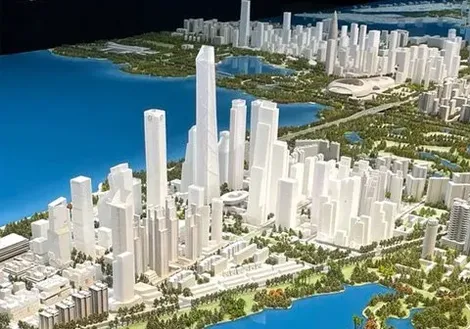
The very best suppliers see you as a partner, not just a customer. Their process should be transparent, communicative, and designed to give you peace of mind. Here’s what that looks like in practice.
Your Guide on the Inside: The Dedicated Project Manager
Working with a factory thousands of miles away can be scary if you don’t have a reliable point of contact. A professional supplier will assign you a dedicated Project Manager (PM). This person is your guide. They should speak fluent English and be your single point of contact for all questions, updates, and feedback. A great PM is proactive. They don’t wait for you to ask for an update; they send you one every week like clockwork.
A “No Surprises” Process: Quality Checks at Every Step
Quality shouldn’t be a surprise at the end. It should be built in from the very beginning. A great supplier will have a clear, multi-stage quality control process where you are involved.
- The Kick-Off: Before they cut a single piece of plastic, their technical team will review all your drawings. They’ll ask smart questions and point out any potential issues, ensuring everyone is on the same page.
- In-Process Updates: You should receive regular (at least weekly) photo and video updates. This lets you see the model coming to life. You can provide feedback along the way, like “Can we make the color of that roof a little darker?” This prevents big problems at the end.
- The Final Inspection: Before the model is packed up, there should be a formal final inspection. If you can, it’s great to fly there and see it in person. If not, they should do a detailed live video call with you, where you can ask them to zoom in on any area. The model should only ship after you give your final, enthusiastic “Yes!”
Playing it Safe: How to Avoid Common Problems
Even with a great supplier, things can sometimes go wrong. The key is to anticipate potential problems and have a plan to avoid them. A professional supplier will help you do this.
| Table 4: Common Risks and How to Solve Them | |
|---|---|
| The Risk | The Smart Solution |
| Shipping Delays or Damage | Insist on professional, museum-quality crating. Use a reliable, door-to-door shipping service and ALWAYS get full insurance. Don’t try to save a few dollars here. |
| Misunderstandings or “It’s Not What I Asked For!” | Have a super-detailed contract. Specify everything: materials, paint colors (using standard codes like Pantone), lighting type, everything. The more detail upfront, the fewer problems later. |
| Poor Quality on Small Details | This is why you check their past work so carefully! And during production, use the photo updates to check the details and provide feedback early and often. |
| Communication Breakdowns | Establish a clear communication plan from day one. Agree on weekly updates, and don’t be afraid to schedule regular video calls with your Project Manager. For more insights on global project management, resources like the Project Management Institute can be very helpful. |
Your Final Checklist for Choosing with Confidence
You’ve covered a lot of ground! Choosing the right model-making partner in China is a big decision, but it doesn’t have to be a gamble. By doing your homework and following a clear process, you can find a team that will exceed your expectations.
Before you sign that contract, run through this final checklist. If you can confidently tick every box, you’re on the right track to getting a spectacular model that will make your project shine.
- ✅ Proven Experience: Have you seen clear proof that they have built models just like yours before?
- ✅ Middle East Know-How: Do they have a track record of successfully delivering projects to your region?
- ✅ Attention to Detail: Does their past work show a passion for quality in the smallest details?
- ✅ Factory Power: Are you confident their factory and team have the size and skill for your project?
- ✅ Trust Signals: Do they have professional certifications and glowing, verifiable client references?
- ✅ Transparent Process: Do they have a clear quality control process that involves you at every key stage?
- ✅ Great Communication: Have you met your dedicated Project Manager, and are you confident in their ability to guide the project?
Finding the right supplier is the first step in transforming your architectural vision from a blueprint into a breathtaking reality. It’s a partnership that, when chosen wisely, will pay dividends for the entire life of your project.


